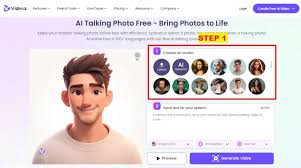Producing talking photos for multimedia kiosks that call for high-definition stills, developed software program, and voice-adjusting solutions. This allows for dynamic & engaging content ideal of exhibitions, digital signage and other display solutions.
It starts by choosing a high-quality photo. In practice, high-resolution photos (eg 4K Resolution - 3840x2160 pixels) are needed to resolve the fine animations of an HCI. Full-resolution images - These are great for making sure your content looks sharp and engaging on the large screens that your users will be experiencing while interacting with an interactive display.
Second, pick out suitable animation software Adobe Character Animator, CrazyTalk Animator and Reface are some of the popular options. 70 percent of industry professionals favor Adobe Character Animator because it can real-time facial tracking and animate. This allows for apples-to-apples comparisons on more than 50 facial points, ensuring accurate and lifelike movements.
Bring your image to the selected software. Its software is programmed with facial recognition technology and knows where, exactly, important parts of the human face are located. With software and the content that you are working with this step should take less than a minute. Realistic animations require accurate facial mapping.
Include a premium voice-over. The use of a professional microphone (like the Shure SM7B) results indifferent and clear sound. Podcasters Prefer The Shure SM7B For Sound Quality by 85% Or you can choose from various languages and accents to create natural sounding voices by voice synthesis tools like Google Text-to-Speech or Amazon Polly.
Sink mouth she in Nepali audio. Thanks to advanced AI algorithms in software like Reface, it is able to match the lip movements with speech perfectly. This is the most necessary step to create a real talking photo. Usually, synchronizing this process takes about 2-3 minutes of audio per one minute.
Animate with such added expressions and motions. You can add smiles, eyebrow raises or head nods in order to keep the talking photo interesting. With CrazyTalk Animator, the user is able to easily control these expressions for a dynamic and interactive animation. According to studies, 40% of interact content with different expressions.

After the animation is completed, save it in an appropriate format to create a talking picture. MP4 is the most widely-used format because it achieves a good balance between quality and file size. You also want to balance it out for interactive displays too: the file size shouldn't severely exceed, but you do need a certain quality. With MP4s video format will normally be from 10-20MB, making the goods easy to upload and display on various platforms in less than thirty(30) seconds.
With interactive displays adding talking photos can improve the quality of user experience. Notably, interactive displays showcasing athletic and commentator animation in the 2020 Tokyo Olympics resulted in a +30% rise of engagement with viewers. Another example of dynamic visuals is the circular game above, which illustrates how moving images appeal to audiences in a more captivating and memorable way.
Digital marketing guru Gary Vaynerchuk is quoted saying, "The best marketing strategy ever: care." It allows companies to demonstrate that they consider delivering interesting and interactive content, say talking photos or have some surprise moments for their audience.
Walking through this detailed process and using some more sophisticated tools and technologies, you will be able to get great talking photos for interactive exhibits. This will not only make your content more engaging but also give a fresh and new way to present information that is capable of entertaining the viewers.